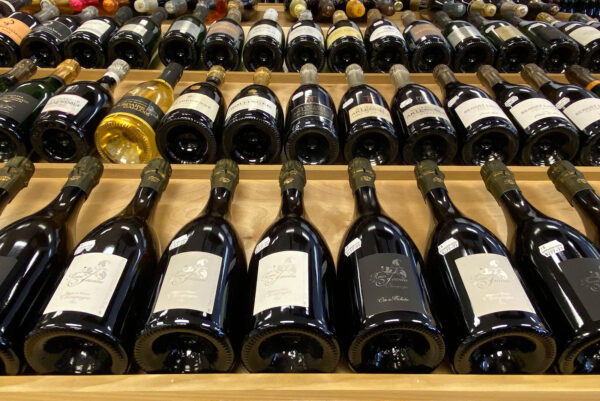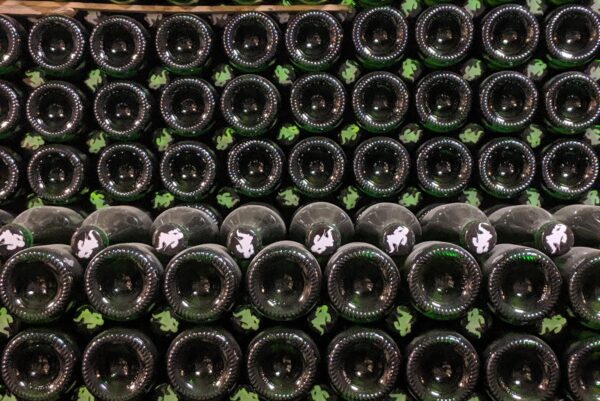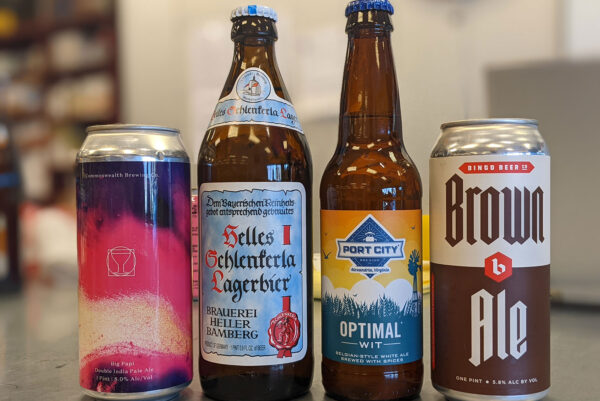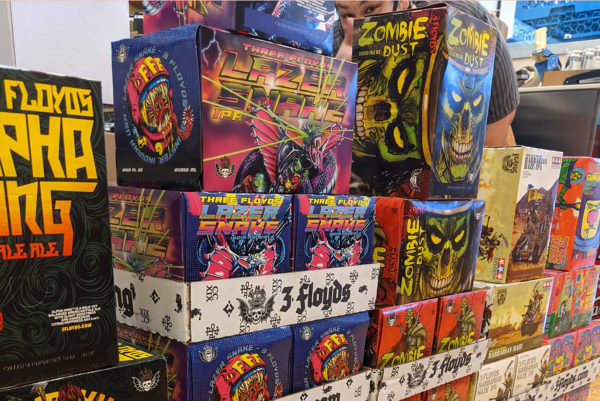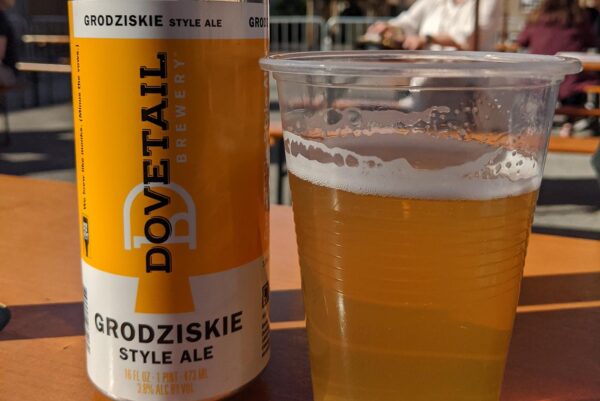This column is written by the team at Arrowine & Cheese (4508 Cherry Hill Road). Sign up for the email newsletter and receive exclusive discounts and offers. Order from Arrowine’s expanding online store for curbside pickup or in-store shopping. Have a question? Email thenose@
Hello again! So, many of you participated in our cleaning the glass experiment? Shocking, isn’t it?
Now you are on your way to better-tasting, terrior-driven wine. And what do I mean by that?
Well, it’s a little complicated, but I do my best. The only reason to drink wine is for pleasure, period! And that means more than just “it tastes good.” A well-made wine is a companion, a friend, sometimes an antagonist, but always a good conversationalist. So it must speak eloquently of its birthplace. When tasting it, I need to recognize the lineage, that exact spot on the globe.
Unlike our ancestors, drinking wine today is an option, not a necessity. We don’t need wine anymore to survive. Fresh water is abundant, so wine is now optional. We don’t drink wine to live. Instead, we drink fermented beverages because they enhance our culinary experiences and please us.
What gets to me is no one talks about wines’ dirty little secrets. Sometimes, I feel like Frank Serpico; I just dated myself, but I love classic movies, so who cares? It’s a good analogy. When did speaking the truth become a liability? We are talking about wine, not national security. I don’t tolerate lazy, sloppy, or greedy winemakers. If you care, you are vigilant and proactive. We deserve a clean wine that speaks to us.
Today’s wines are cleaner and fresher than we drank forty years ago. And they should be. When you embrace science, you preserve terroir, which means uniqueness. Modern science allows a bottle of wine to reflect the exact spot it came from. So a well-made wine speaks to and talks to you like you have been there.
If a wine doesn’t smell and taste like fermented pure grape juice, meaning “grapey,” you have a problem! Wine is NOT supposed to smell like leather, mushrooms, wet-basement, barnyard, burnt tire, green pepper, bandaid, cloves, nail polish, green peppers, or dirt! But, if it does run, I will expand on the causes of faults in a future column.
There are tricks of the trade that remain “trade secrets,” and that’s a problem. For example, did you know your California Cabernet, Chardonnay, or Zinfandel can be technically sweet? The question I’m most frequently asked is, is it “dry?” Well, that depends, and it’s not as simple a question as you think.
Table wine should be dry unless the cuisine has a note of sweetness, which I’m sad to say is far too prevalent today. A winemaker can leave unfermented sugar in the wine to make it easier to drink — think Kendall Jackson Chardonnay, it was deliberately bottled with a slight but perceptible amount of residual sugar to make it appealing to the masses.
Classic European cooking has little, if any, sweetness. Therefore a dry wine is needed. A New World wine is in order if there is any hint of sweetness. Wines from the New World tend to be higher in alcohol from all the sun. Thus energy the vines receive. In the New World, we plant for “commercial” reasons and ensure success, so we grow grapes where we know they will ripen. If not, over-ripen.
Our ancestors weren’t so lucky. So they planted where they stood and had to figure the rest out. Unless you had well water, you couldn’t be sure the water floating downhill was pure enough to drink. Fermented beverages were necessary for survival, lucky us.
Cheers,
Doug
This column is written by the team at Arrowine & Cheese (4508 Cherry Hill Road). Sign up for the email newsletter and receive exclusive discounts and offers. Order from Arrowine’s expanding online store for curbside pickup or in-store shopping. Have a question? Email thenose@
Hello again, it’s your favorite neighborhood wine merchant, Doug Rosen.
In my previous article, I stated there was one simple thing you can do that is guaranteed to heighten your enjoyment of drinking wine (or anything else)! And it’s easy.
Rule number one: thoroughly wash your glass with soap and water before using it! Why is it so important?
The culprit is the sealants used to protect every kitchen cabinet’s interior. For example, suppose you take a glass from your kitchen cabinet without the critical step of first washing your glass thoroughly before using it. In that case, you unknowingly add the flavors and aromas of your cabinets to whatever you pour into them. Allow me to prove my point.
Grab two glasses from your kitchen cabinet, take a whiff and you will immediately see what I mean. Wash only one glass thoroughly with soap and water until it smells like fresh tap water. If the glass has been in the cabinet for a prolonged period, it might take as many as five washings to get the funk out. Make the extra effort to get the glass to a pristine state. Don’t worry about chlorinated water; the wine will pour right over it. And no, using wine instead of water doesn’t work! The sealants are “water soluble” and formulated to bond with water, not wine.
Next, grab a bottle of wine you know to heighten the drama, open your libation and pour about an inch of it into each glass. Swirl, take in the aromas and then taste. I just rocked your world, didn’t I?
The culprit is the micro-particles of the sealants. I’m not a scientist, but this is how it was explained: Wood breathes, as we already know. That’s why wine is aged in barrels, not to season with the wood, like adding salt or pepper to your food but to allow the wine to experience micro-oxidation. This mico-oxidation softens the tannins, making the wine less raspy and smoother on the palate.
The respiration inside your kitchen cabinets allows microparticles of the sealants to fall into your glasses. They stick to the surface like glue, causing the glass to smell like your kitchen cabinet and impact the flavor of the wine. Now your wine smells and tastes like the cabinet! Yuck and double yuck.
Try this experiment at home and report back. I already know how it will go, and you can thank me later.
Rule number two, expect a wine to be shy within 24 hours of a storm, rain or snow, or turbulent weather. Like Willard Scott, I can tell if we will get any precipitation within 24 hours just by tasting wine. I have fascinated multitudes with my accuracy; it’s no parlor trick.
When a storm front approaches, a wine will close up or shut down, making the wine “less fruity” and much less enjoyable. Luckily there is a 1/2 remedy; open a bottle of 14.5% plus alcohol, or better still, a sparkling wine. Those wines are less affected; they will still be shy, but if you’re having a dinner party before a storm, you have an alternative, albeit an imperfect one.
My business partner Shem Hassen and I were in Issy-Les-Moulineaux, a suburb of Paris, to attend a tasting of 140 wines — we only had that day. We began the tasting with the tenth wine; we looked at each other and asked ourselves, “when is it supposed to start raining?” So we had four hours to kill.
We walked into a nearby Armenian Cemetery, looked at the tombstones, and paid our respects until the rain started. When we returned to the tasting, the wines had opened and tasted as expected. True story.
Cheers,
Doug Rosen
This sponsored column is written by the team at Arrowine & Cheese (4508 Cherry Hill Road). Sign up for the email newsletter and receive exclusive discounts and offers. Order from Arrowine’s expanding online store for curbside pickup or in-store shopping. Have a question? Email thenose@
Few subjects provoke more angst than wine. For many, wine is a great mystery, a secret handshake, or a password. It doesn’t need to be.
My job with this bi-weekly column is to help you safely navigate the complex world of wine without intimidation or nonsense. You are in control.
If you take a moment and read my musings, hopefully you find them valuable, educational, practical and perhaps even entertaining. I will be trying to get you to engage and ask questions, make requests for future articles and reach out. I’m listening but know I’m an excruciatingly bad typist and have learned to use the fewest words possible for practicality’s sake.
Let me begin with a little about myself. I am 64 years old and have been in the wine biz since, and I hate to say it since 1977; I began my career in the very spot that Arrowine currently occupies. In those days, you “old-timers” out there might remember the “old” Cheese and Bottle.
I’m not just a fine wine retailer but also an importer within the confines of the laws of the State of Virginia. I have traveled extensively throughout France, Spain, Italy, Germany, Portugal, Austria, Hungary, Switzerland, The New Republic of Macedonia, Serbia, Greece, Israel, South Africa and Argentina in search of the best wines these places have to offer. I also hunt for “new-growers” whose work has yet to be discovered or who are not currently represented in Virginia or our region.
I proudly support Virginia’s Wine Industry. Did you know we are now the fifth largest producer of wine in the USA? Virginia Wine is no longer an oddity; we produce the best wine on the East Coast. And many Virginia wineries are “World Class!”
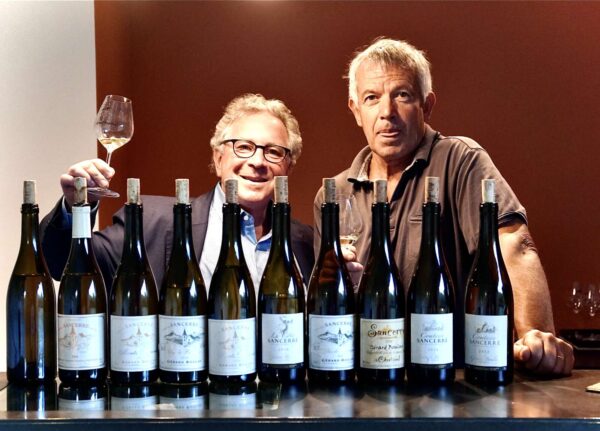
I have extensively traveled throughout Oregon. I’m long overdue for a California and Washington State road trip, but I have a store to run. Pre-COVID, I usually took six buying trips a year. That’s a lot of miles, moving daily, staying in small hotels with no elevator or A/C. And despite what people might think, crappy food. So I usually travel to the countryside, and there aren’t many resources in the middle of nowhere.
All that said, I wouldn’t change a thing. You need to go where the wine is! I’ve met many humble, hard-working families, men and women who are genuinely jack-of-all-trades; they grow grapes, transform the juice into something delicious, and then market it in many cases worldwide. They only get to practice their craft 40 or so times in a lifetime! So you have to be a quick study. How many occupations are this demanding?
I am the ambassador of these families. My job is to tell their stories and, when appropriate, convey how much risk there is at every step. A career in agriculture is like walking on a tightrope without a net. There is so much out of your control, precocious flowering and then a late frost that can wipe out your entire harvest, hail damage, too much rain or not enough, excessive cold or heat, insect infestations, wood diseases and the list goes on and on.
And then you have to ferment the juice and try to get it into the bottle without screwing it up. Sell it and hopefully get paid. Making wine from your own grapes is not for the faint of heart. Trust me!
Congratulations if you made it to the end of my ramblings, I have a secret to share with you. It is the one simple thing guaranteed to heighten your pleasure of drinking wine or anything else.
Never and I mean never, use glass without thoroughly washing with soap and water before using it! I’ll explain why in two weeks and give you a little experiment to perform at home.
Cheers,
Doug

This sponsored column is written by Todd Himes, beermonger at Arrowine (4508 Lee Highway). Sign up for the email newsletter and receive exclusive discounts and offers. Order from Arrowine’s expanding online store for curbside pickup.
“Aroma of skunk, musty, can be similar to burned rubber or cat musk.”
That definition of the lightstruck off-flavors in beer comes directly out of the Cicerone study resources.
But what is lightstruck beer? When certain hop compounds react to UV light, they create 3-methyl-2-butene-1-thiol, or MBT, which you may know as the culprit behind that odorous character often found in some “top-shelf” imported lagers — or late nights on some dark country roads.
Brown glass bottles would filter out most of that UV light where green and clear bottles would let UV wavelengths pass through with greater ease and thus green and clear bottles received a reputation for “ruining” many a beer and changing the flavor of what its brewers would have intended.
For years I bought into that — it even became one of the tenets of my strong support for putting more beer into cans. If some light was bad why not eliminate all light? Somewhere along the way, though, I’ve been introduced to thinking those green bottles unfairly got a bad rap.
Many of my favorite Belgian breweries have been bottling their beers in green glass for longer than I’ve certainly been drinking them. Even after I’d learned the hardline “green is bad,” I longed to try the lambics of Cantillon, Drie Fonteinen and Boon, all of which were shipped across the sea in verdant vessels.
The first Belgian in green that crossed my lips was Saison Dupont. Upon uncorking that bottle, I was struck by the aromas that were decidedly “farmy” before farmhouse ales were truly on my radar. But nowhere was I thinking about skunks or tire fires, just-cut hay, horse stalls and dank grasses. Saison and lambics became some of my favorite styles, and I even saw a noble art in what I saw as the unknown and unpredictable effects of wild yeasts, spontaneous fermentation and wood aging.

This sponsored column is written by Todd Himes, beermonger at Arrowine (4508 Lee Highway). Sign up for the email newsletter and receive exclusive discounts and offers. Order from Arrowine’s expanding online store for curbside pickup.
This weekend is going to be a snack food extravaganza with plenty of commercial breaks, a whole lot of Snoop Dogg (performing in a halftime show and hosting/coaching the Puppy Bowl!) and rumor has it there will also be a football game going on around all of this.
There’s also going to be plenty of beers to go around, both in those commercials and in many of our hands. The sort of light lagers you’ll mostly see advertised will certainly have their place at many parties and on bar tops but if you’re interested in stepping up a few of your pairings I’m here with a few suggestions for you. Now, I’ll say a great craft lager or your favorite IPA could just as easily go with any of these foods and you can feel free to mix and match any of these as well, but I’m going to throw out a few of my favorites and give what you’ll hopefully find to be inspired pairings.
Nachos and Witbier
This pairing works incredibly well because the Wit will introduce a bright and fresh element with some citrus and spice. If you’re loading up nachos with fresh guac, pico de gallo and lots of shredduce, a tasty witbier can compliment all those flavors. If you prefer your tortillas smothered in queso, refried beans or chorizo then the higher than average carbonation of the style can cut through those denser, rich flavors.
Beermonger’s Choice — Port City Optimal Wit
Chili Con Carne and Smoked Lager
I really love this pairing because the smoke flavor really incorporates well into chili but a crisp lagered finish can help keep your palate from getting overwhelmed. There’s lots of suggestions out there for porters and stouts here which I love, but in the interest of keeping this party going until at least when the halftime show is over I like the low ABV options.
Beermonger’s Choice — Aecht Schlenkerla Helles Lagerbier
Pepperoni Pizza and Brown Ale
Plan ahead if you’re looking to get delivery on this day since it is one of the busiest of the year for pizza shops or if you’re like me grab some of the Calabrese Salami from our deli and make your own spicy take at home. Brown ale is going to really pair well with the crust, cheese, sauce and meat without overpowering any of them. It can be tempting to grab an IPA or Pilsner here as well but when the cured meats start to join the party I really enjoy the toasty malty compliment here.
Beermonger’s Choice — Bingo Brown Ale
Wings and New England IPA
Hops are going to play up the spice here but a juicy IPA with low bitterness will keep you from burning your tongue off. I really enjoy the way the heat can play with some of the super tropical or citrusy hop varieties. The nice thing with this pairing is neither one of these are particularly known for their subtlety, the big flavors here can go up against each other for the entirety of four quarters.
Beermonger’s Choice — Commonwealth Big Papi

This sponsored column is written by Todd Himes, beermonger at Arrowine (4508 Lee Highway). Sign up for the email newsletter and receive exclusive discounts and offers. Order from Arrowine’s expanding online store for curbside pickup.
January is always a strange time in the beer world.
You have a sizable portion of clientele who are participating in a Dry January (or at least taking a few weeks off) but we also see two of the years mostly anticipated releases in Troegs Nugget Nectar and Bell’s Hopslam (at least in years when the national supply chain issues don’t hold up its arrival in Virginia.) In years past this is a typical time to see many folks in the industry changing jobs and this year that’s meant seeing a few familiar friendly faces stopping in representing some of the bigger craft breweries in the market.
When we start back up our tastings you’ll be sure to see some veterans repping new brands. January is also a great time to take a look back at the previous year and make a few guesses as to what the upcoming year may hold.
Starting off, it was absolutely no surprise to me to see that no matter which way I sorted the numbers, our number one beer of 2021 was Bingo’s Classic Lager. Dollars, units sold, cans crushed by our cheesemongers — this one led them all. Was it the clean, refreshing, quaff ability of this beer that propelled it to the top spot? The fact that you get a six-pack of 16oz cans of craft lager at what has quickly become the starting price point for many 4 packs? Maybe it is just the understated beauty of the blue and white cans.
I’m not one to complain whatever the cause was, this beer was one of my favorites. In fact, a couple of cans were among the first beers to go in the fridge at the new house when I moved this past week. A perfect beverage to sip on while unpacking. While I don’t think that craft beer prices are going to come back down, I do think that a number of brands with the ability to produce solid options at this price point will take hold.
Recently Asheville, North Carolina’s Hi-Wire brewing announced plans to move all of its core beers into the six pack 16oz format and their Hi-Pitch IPA is quickly staking its claim to a top spot for 2022’s numbers here.
In the world of IPAs the talk might be all about the Hazies, but whether it is the never ending quest for the new or maybe a shift in overall preferences the top spot belonged to a newcomer for 2021 — Vibrissa’s Gracious Living.
The dream of the nineties is alive in Front Royal with this flagship West Coast styled IPA nestled alongside a series of delicious lagers, English bitters, milds and *gasp* more West Coast IPAs. Many see West Coast IPAs making a clear comeback in 2022 and I’m already hearing from brewers and sales reps that there are going to be some of the same types of innovations coming to the style that helped drive the Haze Craze of the past few years.
Hops in all their forms and citrus additions have already played a big part in the West Coast style’s history but look for talk of thiols and terpenes to join the conversation. We probably won’t be seeing any Frankenberry Milkshake 100 IBU DIPAs quite yet though.
Rounding out our top three for the year and certainly the one that caused the most excitement in its immediate arrival was 3 Floyd’s Zombie Dust. We had our phones ringing off the hook when this first came into the shop, of course that was one of the only ways to reach us at the time since we had yet to re-open our doors at the time. The excitement of a long storied brand arriving really lit a fire for many of you. That excitement continued throughout the year as well and we were consistently moving through cases of the one time top rated brewery in the world.
What will be the next brewery to make its way to Virginia’s shelves?
There’s some STRONG contenders in the New England area that I know many of you are clamoring for and a number of California breweries that make the occasional appearance when some of the major beer festivals in the area are happening. If I had my druthers though we would finally see the return of some of my favorite Belgian breweries that have had their distribution rights in limbo for a few years.
This sponsored column is written by Todd Himes, beermonger at Arrowine (4508 Lee Highway). Sign up for the email newsletter and receive exclusive discounts and offers. Order from Arrowine’s expanding online store for curbside pickup.
I’m going to skip all of the after repeated mass marketed retail propaganda about this being the most wonderful time of the year, but I will say this is definitely something I look forward to every year, and has quickly become a really important tradition in my house.
Somewhere each year between late November and December 25, I am personally on the hunt for a bottle of a very special barrel-age stout. There are many that come out this time of year, and many people have their personal favorites.
In fact there was one quite large release last Friday that you may or may not have noticed was absent from the shelves here at Arrowine, Goose Island’s Bourbon County stout. I was pretty surprised to see quite a few articles and reactions coming out about the allocations of Goose Island’s Bourbon County stouts. It’s long been something talked about among many of my industry colleagues, but rarely do the details of such come out in such plain view.
What seemed to kick off most of the discussion was this article from the Chicago Tribune which interviews a number of Chicago area stores, some of whom had longer relationships with Goose Island than others, and it made for a pretty interesting read covering quite a few perspectives.
I can now say with a bit of pride that I’ve never professionally spent money on any of the Bourbon County stouts. Sure for myself I’ve bought a bottle or two here and there when it’s not been a hunt to find it. But truthfully for the times that I would have really wanted it, it was not available here on the east coast. Then by the time it was more widely available, many of the demands for big barrel-aged stouts were being met by its many imitators.
Then of course 2015 happened. If you followed along with Bourbon County stout for a while, you may remember 2015 as the year of the infected bottle that made it out, the subsequent recall/buyback programs and the forever altering decision to begin pasteurizing the bottles before they left, which would increase the stability of the beer, but take away some of its aging potential as a living product. Some of you may remember from my little love letter to Orval that a bottle with the ability to completely change over time and become unpredictable is certainly not the worst thing in this beermonger’s book.
However, 2015 was the first time I got my hands on a bottle of Hardywood’s Kentucky Christmas morning, and I tell you the morning of December 25 has never been the same.
Hardywood’s Gingerbread Stout first was released in 2011, and shortly thereafter began collecting many well-deserved accolades (100 points from Beer Advocate Magazine for instance), and spun off a number of different gingerbread variants (Bourbon GBS came first in 2012). There continue to be new variants added each year with varying degrees of availability. Read More
This sponsored column is written by Arrowine (4508 Lee Highway). We take a break from our usual beer programming this week to tell you about a special event at the shop.
We welcome you to explore the new Arrowine and Cheese — your neighborhood store with a national reputation! Enjoy the grand reopening of the new Arrowine and Cheese now through Saturday, November 6.
What’s New
- Authentic sweet and savory French Crêpes made to order while you wait
- Twelve of the very best craft beers on tap for crawler and growler fills/refills
- One of the region’s largest selections of natural, organic and biodynamic wines from producers like Jean-Francois Ganevat, Ariana Occhipinti, Domaine Cos and Herve Villemade
- The region’s largest selection of artisan, seasonal, and specialty cheeses and charcuterie
- An updated and expanded gourmet grocery section
- A newly expanded Grower-Champagne selection filled with hard-to-find producers like Cedric Bouchard Roses de Jeanne, Jerome Prevost, Emmanuel Lassaigne and many more
- A comprehensive selection of Virginia wines from Linden, Glen Manor, Chatham Vineyards and Michael Shaps to name a few
- Timely online ordering through www.shoparrowine.com, usually ready in two hours or less
What’s Familiar
- Our 4.8 of 5 stars Google satisfaction rate
- Our reputation as THE Best Wine and Cheese Shop in Virginia according to DC Dining, Virginia, Northern Virginia and Arlington Magazines, and, of course, ARLnow’s Arlies
- Our curated selection of world-class wines
- Our legendary email sales (Be sure to sign up at shoparrowine.com to receive a 20% discount on your next in-store purchase — restrictions may apply.)
- Your guaranteed satisfaction and our sincere appreciation of your business
The party is on! Please join us for the grand reopening festivities today, Friday, November 5.
Enjoy a 10% discount on any crêpes, free wine tasting of French favorites with Damien Lehoux of Elite Wines Imports from 4:30-6:30 p.m. and free beer tasting with Rocket Frog from 5-7 p.m.
Grand reopening festivities continue Saturday, November 6 with free samples as we slice into the world’s best 200lb Gotthelf Emmentaler Cheese with Gourmino Imports at 1 p.m., free beer tasting with Brouwerij Cornelissen from 1-4 p.m. and free Spanish wine tasting with Aurelio Cabestrero of Grapes of Spain from 1-4 p.m.
We look forward to seeing you!
Sign up for our email newsletter and receive exclusive discounts and offers. Order from Arrowine’s expanding online store for curbside pickup.

This sponsored column is written by Todd Himes, beermonger at Arrowine (4508 Lee Highway). Sign up for the email newsletter and receive exclusive discounts and offers. Order from Arrowine’s expanding online store for curbside pickup.
Combining two great things often yields excellent results. Think: Chocolate and peanut butter, Jordan and Pippen (been a while since da Bulls got a shoutout in this column), or Bernard Purdie and just about anyone.
For me, two of my favorites are beer (of course) and traveling. I love visiting some of my favorite breweries when I travel while also finding new ones. When you sit down at a brewery tasting room in a different city or country, it can be difficult to narrow down the choices, especially if you’re not familiar with what beers or styles the brewery is known for.
Asking your server/bartender what they are excited about is usually the easiest way to make this determination, but it can yield varying results if your tastes don’t align. Checking an app like Untappd can help you find what’s popular, but that’s certainly weighted toward extreme examples of some styles. Medals and awards are nice when they are recent or consistent, but there is always a lot that can change in a beer if a brewer leaves or recipes are changed. The one steadfast rule that has never let me down before is, when you see one, always order a Grodziskie.
I first read about Grodziskie in Randy Mosher’s book Radical Brewing. I cannot recommend this book enough if you’re interested in home-brewing or even want to learn the history of beer styles. Grodziskie stood out not only because famed beer author Michael Jackson mentions the version Mosher brewed for him in the introduction of the book, but also because it is such an obscure style and something very unique.
This is probably the time to explain to you what that style is. Grodziskie is a Polish smoked wheat beer that is low in alcohol and full of smoky flavor — but it’s also very refreshing. Typically, it’s produced with 100% oak-smoked wheat malt, which, over a decade ago when I first read about it, I couldn’t even find available to buy so I could brew up my own version of the recipe in the book. That, of course, led to the build up of this beer in my mind, a mythical creature I was always on the lookout for. At least for a little while, the scarcity of the raw materials meant no one was really brewing this stuff, and it slipped toward the back of my mind lingering in relative obscurity much as it had throughout much of the 20th century in its native Poland.
I’ll point out that this style still sits in obscurity, and I can count on my fingers how many examples I’ve tried over the years. But of those literal handful of examples I have tried, they all made an impression on me.

This sponsored column is written by Todd Himes, beermonger at Arrowine (4508 Lee Highway). Sign up for the email newsletter and receive exclusive discounts and offers. Order from Arrowine’s expanding online store for curbside pickup.
This year, more than ever, I’ve been fielding questions about the difference between an Oktoberfest, Marzen and a Festbier. Short answer? Not much. OK, thanks! Short column this week — I am on vacation.
Wait, you’re still here? You say: “Todd, it’s not that simple. In those small differences, there are big details and centuries of history.” OK, that is true. I guess I can get a little more into what you’re getting in the bottle, can or on tap when you see these words on the label.
First off, Oktoberfest is a celebration, tied to a time and a place, and by association, has come to describe a type of beer. The original Oktoberfest took place in 1810 to celebrate the marriage of the crown prince of Bavaria and his bride and was a five-day festival. Over the years, fairs, horse races, and many booths selling food and drink were added.
The drink most associated with the festival? Beer. In Germany, the name Oktoberfest is protected, and there are only six breweries in Munich that are allowed to serve beer at the celebration and make use of the name on their label. That name is then tied much more to the time and place than to the style of beer itself.
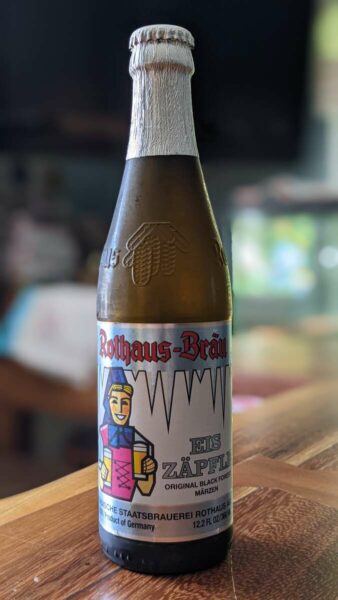
Traditionally, the styles served would have been Marzen, named because the beer was brewed in March before the advent of refrigeration and brewing was put on hold during the warm summer months. Now, typically when we think of Marzen, the rich amber-colored lagers of the fall come to mind. A personal favorite of mine is Port City Oktoberfest. However, if you were one of the few lucky enough to pick up some of the Rothaus Eiszäpfle when it landed, you know that German Marzen can be quite clear and golden as well.
The modern Festbier style has much foggier origins. The most repeated story leads back to Paulaner’s introduction of their strong golden Weisn style, but there is further research out there tying the introduction of this lighter style to the change from ceramic steins to clear glass. The fact of the matter is that this style is the current beer of the moment at Oktoberfest and is growing in popularity with many American brewers as well. Our friends over at DCBeer recently did a taste test of many Oktoberfest offerings, and it was interesting to note that a modern Festbier from Union was the winner.
The confusion between names and styles is understandable in many cases, so feel free to keep asking your Beermonger. Do you prefer the more American take on the Marzen style, or are you a purist who wants the modern Festbier that will flow in Munich hopefully again in 2022?
This sponsored column is written by Todd Himes, beermonger at Arrowine (4508 Lee Highway). Sign up for the email newsletter and receive exclusive discounts and offers. Order from Arrowine’s expanding online store for curbside pickup.
I, for one, welcome our pumpkin beer overlords. There it is, I’ve said it. Much like Kent Brockman or perhaps later Ken Jennings, I have accepted my fate.
You would think the beer calendar was only 51 weeks because, each year, the outrage comes earlier and earlier. Yes, outrage. There is no release that draws more ire than the arrival of pumpkin beer in the middle of the summer. There is something about a 10% imperial amber ale with nutmeg, cinnamon, vanilla, and what is most likely frozen or canned puree from last fall that brings out the hot takes from everyone — and I mean everyone. Customers, sales reps, shop owners, cheesemongers, delivery drivers… I smile through it (you can’t always tell under this mask, but yes, there is a smile) and offer up some placation like, “Yes, it is earlier than last year,” or “You’re right, it does need to be about 30 degrees cooler before I want to drink this, too.” But occasionally I do need to assure people that pumpkin beer is not “the devil” or “only for girls.”
I think fall beers have definitely caught a very bad reputation and drawn a lot of ire from many — including at one point even myself — because, in part, they show up earlier and earlier each year, cutting into the summer. They also draw in many non-craft beer drinkers. (I’m not afraid to admit the early arrival of the 30 cases of Pumking bombers that I preordered in 2012 showing up in the middle of August was greeted with a string of expletives that I am not typically known for spewing.)
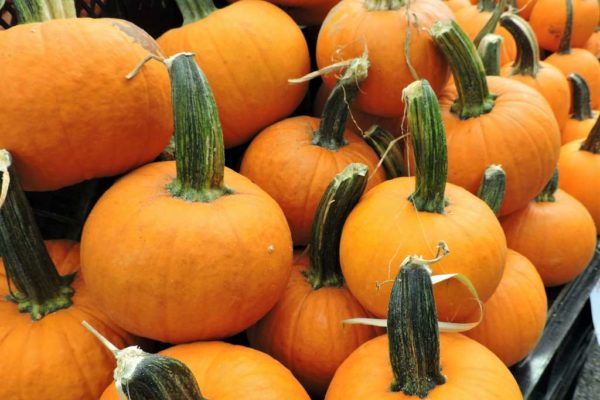
For years, I really thought I was taking some moral high ground by never putting pumpkin beer out on the sales floor until Sept. 1 — that seemed like an at least somewhat appropriate fall date. But the truth is, it didn’t matter when I put them out. They kept showing up earlier and earlier each year, and I would talk to a number of customers who were looking for them earlier. I would grab them a bottle or two from the back and tell them when it was “officially” coming out in hopes they would come back for more. But I know that wasn’t always going to be the case — I’m sure the next store they stopped in, if the pumpkin beers were out, would sell them as much as they wanted. I also know the year before, in the small edge of the suburbs town I was living in at the time, the one store that stocked Pumking marked their bottles up about 300% and was still able to sell out of their stock in about a week.
Oktoberfest beers present their own unique problems in coming to market. Here is my obligated mention that Oktoberfest doesn’t always take place in October. But that doesn’t stop people from wanting to drink these beers well into November, though, and who can blame them? The amber-hued toastiness of a Marzen is welcome many, many times throughout the year. Say nothing of the golden, bready and more hop-present Festbier style, equally at home with pretzels and almonds as it is with pizza and football games.



